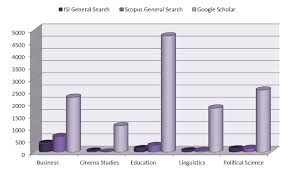How to Find Google Scholar Citations Search Ranking:Top Tips

Authors can build a profile page on Google Scholar Citations that highlight their posts and citations. You can opt to have your list of posts updated automatically or manually, and reference metrics are updated automatically. Under the Google Scholar profile of a researcher, the H-Index identifies the reference matrix from its publications.
It’s simple to conduct a broad search for scholarly literature using Google Scholar. You search academic publishers, professional societies, online repositories, institutions, and other websites for articles, projects, books, summaries, and court decisions. You can find references to articles in the search results list. Use one of the links to import a prepared reference (MLA, APA, Chicago, Harvard, or Vancouver) into your bibliography tool.
What is a Citation mean, exactly?

AA scholarly work that makes a reference to a book, paper, or author. A “citation” informs your readers that some of the information in your work was derived from another source. It also offers your readers the information they need to locate that source again, such as author information.
Google Scholar citations:
- Citation meaning in English: a citation is a reference to a book, journal, or author, particularly in scholarly writing.
- Citation meaning in Urdu: حوالہ جات
- Citation meaning in Hindi: उद्धरण
- Meaning of Citation: A citation (or cite) is a legal phrase that refers to a specific legal source, such as a constitution, legislation, a reported case, a treatise, or an opinion.
How to Set up a Google Scholar Citations profile:
Google Scholar References provides you with a way to group all your posts that are organized by Google Scholar. This enables you to easily find others when searching by author’s name and helps calculate reference metrics.
Configuring Google Scholar References provides access to your reference metrics, enhances your discovery through public profiles, and allows you to manage your publication list.
You can set Google Scholar to automatically add posts, or you can choose to manually review and add posts.
You can only create a profile if one of your publications has been indexed by Google.
Google Scholar Citations:
- Start your profile here, and access the instructions for managing your profile and discovering the metrics.
UTAS Google Scholar Citations Profiles:
- Public profiles list for UTAS staff and students. Ensure your profile is public and that you are affiliated with the University of Tasmania before adding it (confirm with your university email address).
Google Scholar Citations Search:
Searching Recent Papers
In most cases, your search results are organized by relevance rather than date. Try the following options in the left sidebar to find newer articles:
- Select “Since Year” to see just recently published papers, ordered by relevance;
- Select “Sort by Date” to see only new entries, sorted by date;
- Select the envelope icon to get new results delivered to your inbox on a regular basis.
Searching the complete text of an article:
The majority of the publications have free abstracts. Unfortunately, reading the complete article could necessitate a subscription.
Here are a few ideas – Google Scholar citations
- To the right of the search result, choose a library link, such as “FindIt@Harvard.”
- To the right of the search result, choose the [PDF] link;
- Check out the alternative sources by clicking “All variants” under the search result.
- To see comparable articles, click “Related articles” or “Cited by” under the search result.
If you’re a student at a university but don’t notice links like “FindIt@Harvard,” contact your local library to find out how to get access to their online subscriptions.
If the search results are too narrow for your requirements, look at the “References” sections to see what they’re citing. The nature of referenced works is frequently more general.
Searching citations in Google Scholar:
For google scholar citations, you need to:
- Go to Google Scholar.
- Click Advanced Scholar Search
- Fill in the relevant search keyword.
- Select the Search Scholar option.
- Find the correct item in the list search results.
FAQ – Google Scholar Citations
What is Scholar Citations APA:
The APA Style Manual contains rules to enable writers in determining the acceptable amount of citation and avoiding plagiarism and self-plagiarism. Only three components are included in an APA in-text citation: the author’s last name(s), the year the source was published, and sometimes the page or location.
The APA Publication Manual, now in its seventh version, offers a number of modifications and improvements aimed at making the APA style more useful for students, instructors, and other educational stakeholders.
What is the Google Scholar extension and how can I use it?
The Google Scholar Button adds a browser button to any online page for quick access to Google Scholar. To do so, click the Scholar button. The full text can be found on the internet or in your university library. To find a paper, select the title on the page you’re reading and click the Scholar button.
Here are the best 5 Chrome addons for automatically creating proper citations.
Google Scholar citations:
- Free APA and MLA Citation Generator
- BibItNow
- Citationsy.
- Lazy Scholar
- MyBib: Free Citation Generator
How to increase Google Scholar Citations:
The research backs up suggestions on publishing best practices: how you write your manuscript and where you put your data import.
According to research, there are five techniques to improve the number of citations.
1. Pay attention to the length and punctuation of your title.
The study also discovered that using colons in the title increased citations while using question marks diminished them.
2. Make use of preprint servers to get your results out sooner.
Papers that were submitted to the bioRxiv preprint repository before being published in a peer-reviewed journal received an average of more citations than those that were not.
This citation-increasing effect was discovered to last for at least three years after the journal was published.
3. Don’t use a country name in your title, abstract, or keywords.
When compared to articles without country names in the title, abstract, or keywords, publications containing country names in the title, abstract, or keywords acquire fewer citations and are published in journals with lower impact factors.
4. Provide a link to your paper’s supporting data in a publicly available repository.
In a recent study released on the preprint service arXiv.org, a team of Alan Turing Institute researchers discovered that easy access to data may have an impact on a paper’s citation count.
https://www.natureindex.com/news-blog/studies-research-five-ways-increase-citation-counts.
5. Remove the hyphens.
Citing writers who neglected to include hyphens in the titles of papers they mentioned had their citation counts reduced, according to recent research.
How to export google scholar citations to word?
If you have located a number of citations in Google Scholar that you would want to download, you can do so by saving them to your own “Library” of citations and downloading them one at a time or in bulk.
This will allow you to download 10 citations at a time by default. To get more, go to Google Scholar’s settings and change the display to 20 items. The amount of goods you can have is limited to 20.
Downloading the Google Scholar citations:
1. To add an item to “My Library,” click the star just below the citations and save.
2. To access your selected citations, click the “My Library” tab.
3. Select citations for download by checking the box next to each one.
4. To download the selected citations, click the Export/Download option.
5. From the selection, choose the format you want to download.
How do I search Google Scholar by citation?
Google scholar citations: The reference information in Google Scholar is extracted from scholarly journal articles in the Scholar database. Users can choose to exclude patents as a source of citation data and instead include citations from legal journals as well as decisions from federal and state courts.
If these sources have cited a publication, it will have a “Cited By Link” in its entry, which will reveal the citing journal articles and patents (and the court opinions, if selected).
How to Use Google Scholar and “Who is Citing Whom” to Find Citation Counts
- Select Advanced Scholar Search from the Google Scholar citation.
- Click the Search Scholar button after entering the proper search keywords.
- Find the proper article in the list of search results.
- A “Cited by” link will appear at the foot of the record if the article was cited by others. To see who has cited this item, go to this link.
You can also apply the Google Scholar Citation search and count the number of cited publications and the H-index for an author with some Software & Programs.
- Google Scholar Citation Counter This tool is as accurate (or as wrong) as Google Scholar. By clicking on the “see publications” link, you can double-check and tweak the data that the gadget uses to calculate.
- Publish or Perish (PoP): PoP is a free download that allows you to analyze Google Scholar citation data more thoroughly.
- CIDS is an acronym for Citation Impact Discerning Self-citations.
Although the service is free, there are numerous restrictions. Only one search per email is allowed, according to the FAQ page.
How are documents ranked in Google Scholar Citations?

Google Scholar attempts to rank articles in the same way as academics do, by considering the whole text of each document, where it was published, who wrote it, other factors, and how frequently and recently it has been mentioned in other scholarly literature.
Google Scholar Citations Ranking: Looking at all of the articles published in that journal in that year and then seeing where the article sits in the quantile is a useful approach to weighing an article’s influence on its journal and year. Another option – especially for older publications – is to check whether a manuscript contributes to a journal’s h-index, that is, whether it has been referenced at least as much as the journal’s h-index.
How to use Google Scholar Citations APA?
You can retrieve citations for articles in the search result list if you use Google Scholar. Use one of the links or copy and paste a structured citation ( MLA, APA, Harvard, Chicago, or Vancouver) into your bibliography managerial tool.
- Select the Cite link, next to your item.
- Choose a citation style.
- In your working document, paste the citation.
- Double-check your formatting and make any necessary changes to reflect your chosen citation style.

It Should Look Like APA – google scholar citations
Taylor, G. (2218). Shakespeare’s Early Gothic Hamlet.
Critical Survey, 32(1-3), 6-35.
https://nicheblink.com/11.3267/cs.2218.31010302
- -Search by Year to Find Trending Topics
- -Explore Related Articles to a Certain Topic
- -Explore the Most Popular Articles and Publications
- -Follow the Citations for Additional Ideas
- -Narrow Your Results by Field
- -Use Keyword Research to Inform Your Search
- -Find Industry and Competitor Topics
- -Use Google Scholar to Expand Your Customer Base
See Also:





